Another boring week here with no sign of acceleration or even ‘some’ improvement:
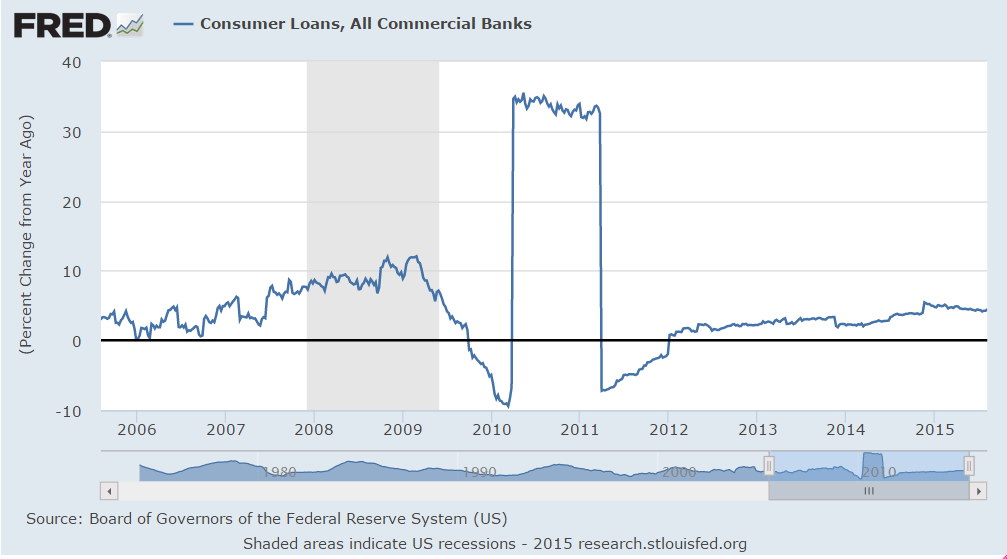
Thought I’d throw this in for those of you worrying about out of control growth of govt payrolls:

Presumably the Fed would raise rates to cool down a forecast for an inflationary credit expansion, no?
Up some, but still very low:
Rate of growth slowed a bit more:
Nothing exciting going on here:
Rail Week Ending 11 July 2015: Back to Contraction
Econintersect: Week 27 of 2015 shows same week total rail traffic (from same week one year ago) contracted after expanding last week according to the Association of American Railroads (AAR) traffic data. Intermodal traffic expanded year-over-year, which accounts for approximately half of movements – but weekly railcar counts continued in contraction.
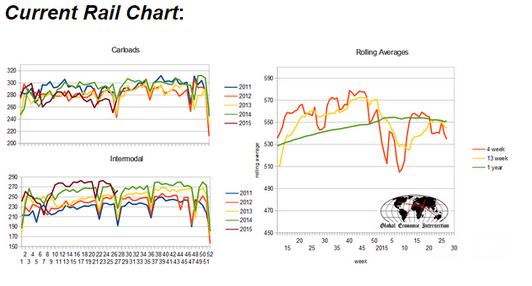
Rate of growth still declining:
Slow steady growth continues, but no sign of acceleration yet:
The purchase index had a nice increase, more than reversing last week’s decline, as cash purchases have declined and been ‘replaced’ with mortgage financing. There has been a pick up in total sales as well, though applications remain severely depressed and haven’t even recovered to 2013 levels. The July 4 holiday may also have created a distortion:
MBA Mortgage Applications
Highlights
Weekly data are often volatile, evident in MBA’s mortgage applications where big gains in the latest week offset big losses in the prior week. The purchase index rose 7 percent in the week with the refinance index up 3 percent. A fall in rates helped the week’s volumes with the average 30-year mortgage with conforming balances ($417,000 or less) down 3 basis points to 4.23 percent.
Low than expected and not reflecting an acceleration from Q1.
And note the misleading cheer leading:
Highlights
The consumer is showing some life. Consumer borrowing rose $16.1 billion in May following an upward revised $21.4 billion in April. Key to this report is the component for revolving credit which is where credit cards are tracked. Revolving credit rose $1.6 billion in May, a moderate gain that follows, however, two very strong gains in April and March. Non-revolving credit, inflated by the student loan subcomponent, rose $14.5 billion in May. Non-revolving gains, however, do reflect gains for vehicle financing.
No sign in a pick up in growth from Q1 to Q2:
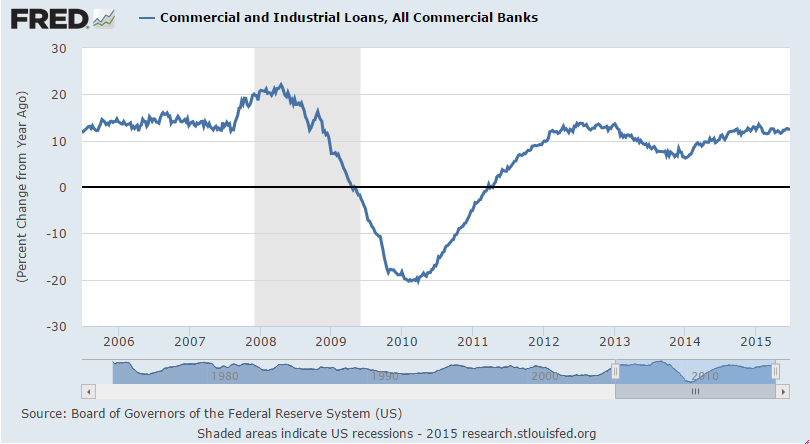

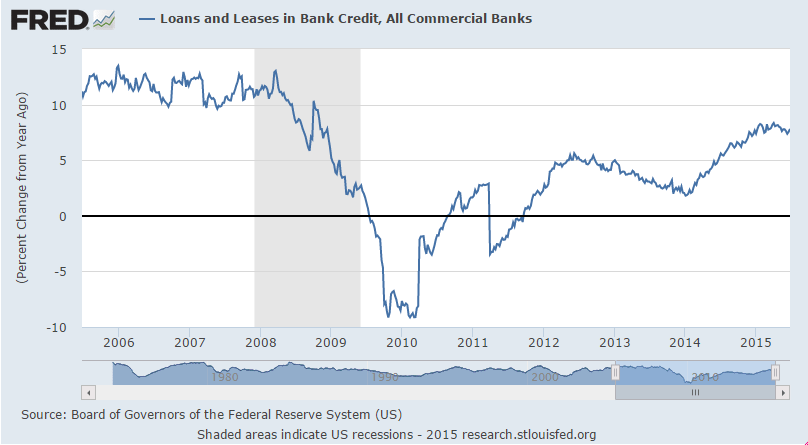
Looks like the very small pickup in the rate of growth has at least moderated:
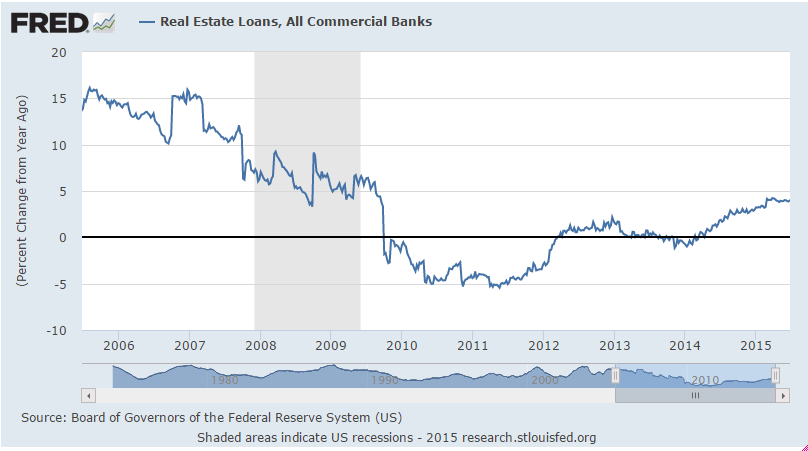

Rail Week Ending 27 June 2015: Just Another Bad Month for Rail
(Econintersect) — Week 25 of 2015 shows same week and same month total rail traffic (from same week and month one year ago) contracted according to the Association of American Railroads (AAR) traffic data. Intermodal traffic expanded year-over-year, which accounts for half of movements – but weekly railcar counts continues in contraction. It should be noted that the level of contraction worsened from the previous week.
Yes, and the rate of growth is lower than the last cycle, and steady to lower, not ‘accelerating’, and in any case note that it jumped up going into the last recession.

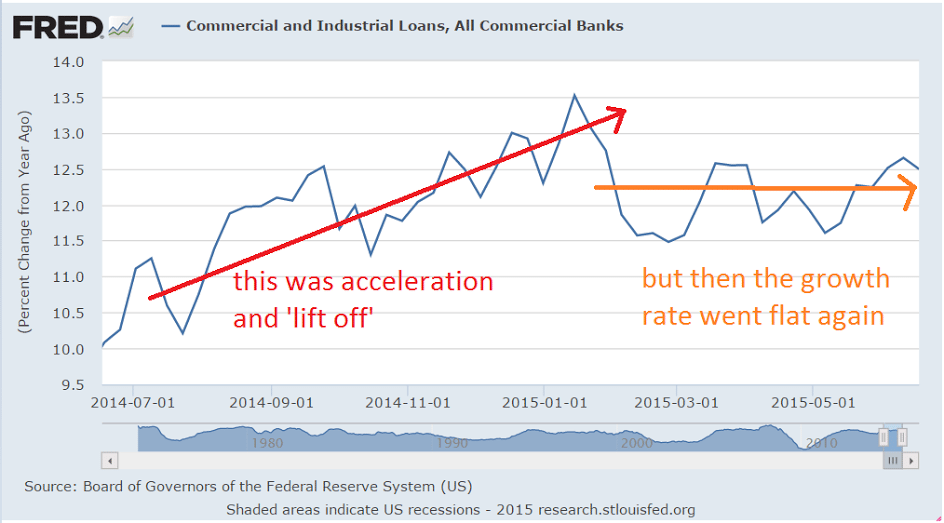
And commercial paper isn’t growing as was the case in the last cycle, so that element of total credit remains flat and depressed.
I see no evidence yet of ‘lift off’ from Q1 to Q2, only a very modest bounce of a few indicators and a strong possibility of Q2 being 0 should inventory/sales continue to revert and net imports be larger than expected as the last report looked like a zig that’s always followed by a zag:

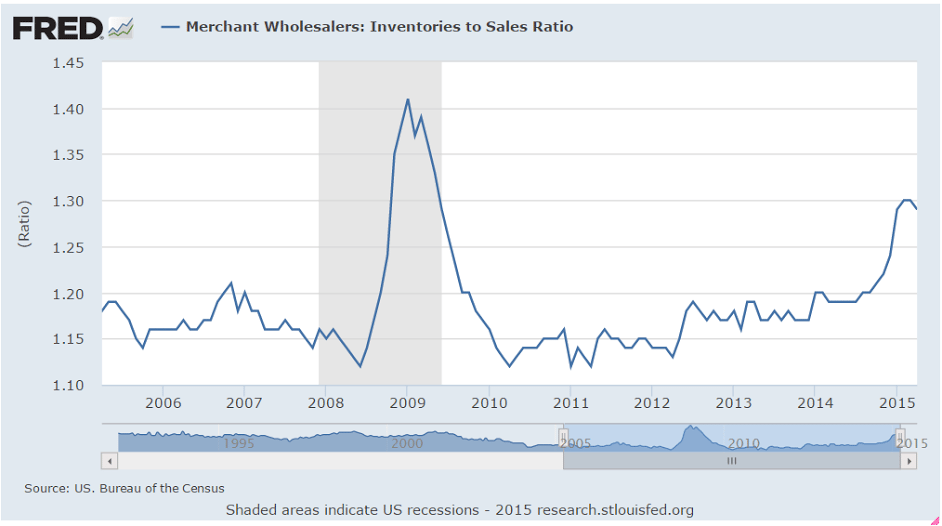

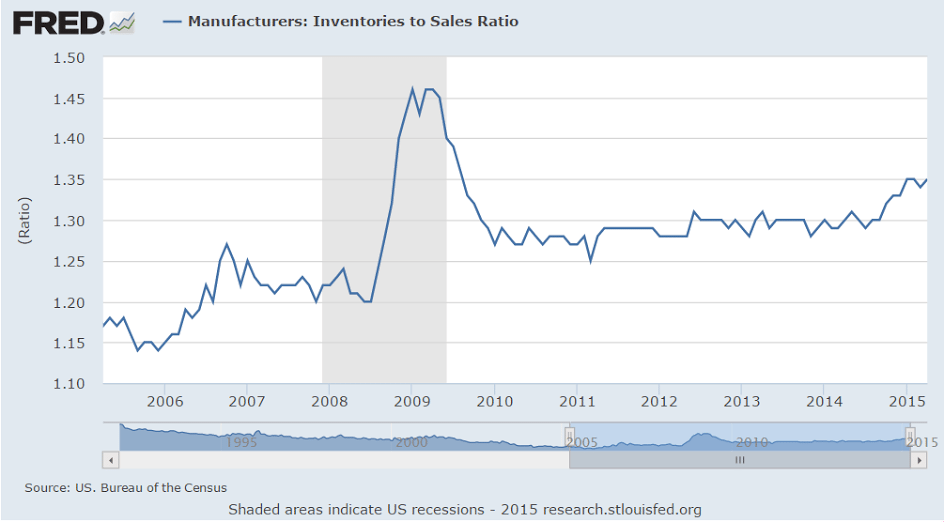
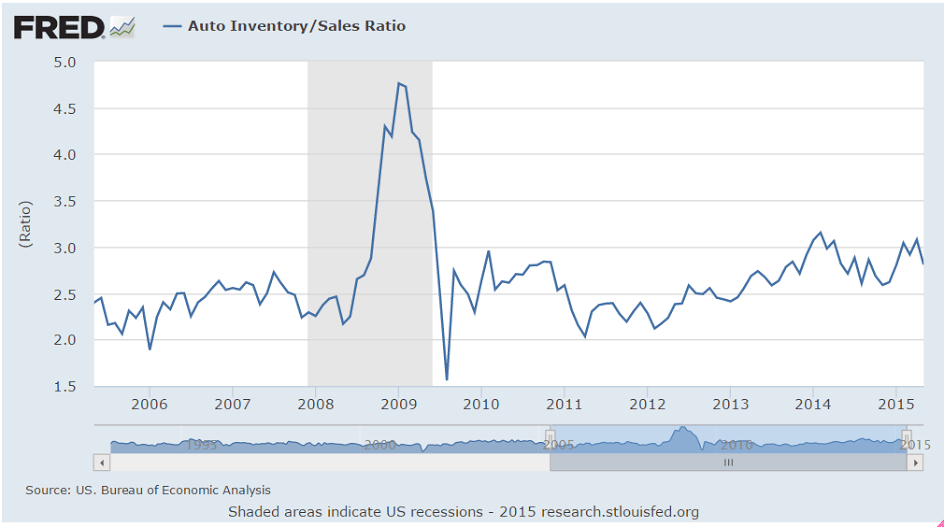
Port strike and price influence:
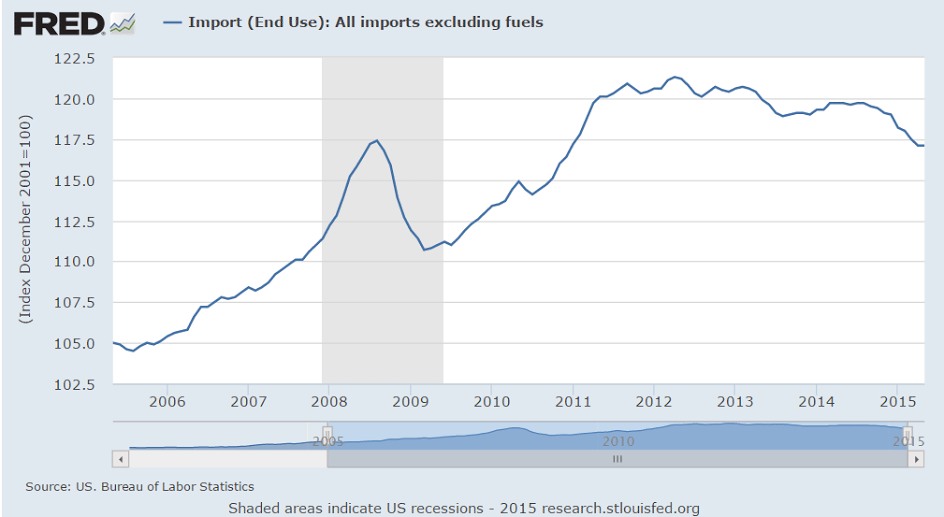

zigs up followed by zags down:

Net exports decreasing again, and now oil is a bit higher and US production growth has slowed and likely turned negative in June, with oil consumption up a bit, adding to oil imports. And non oil imports have been rising with the strong dollar, which has also dampened US export growth. Furthermore, the global drop in capex due to lower oil prices looks to have reduced US exports as well.

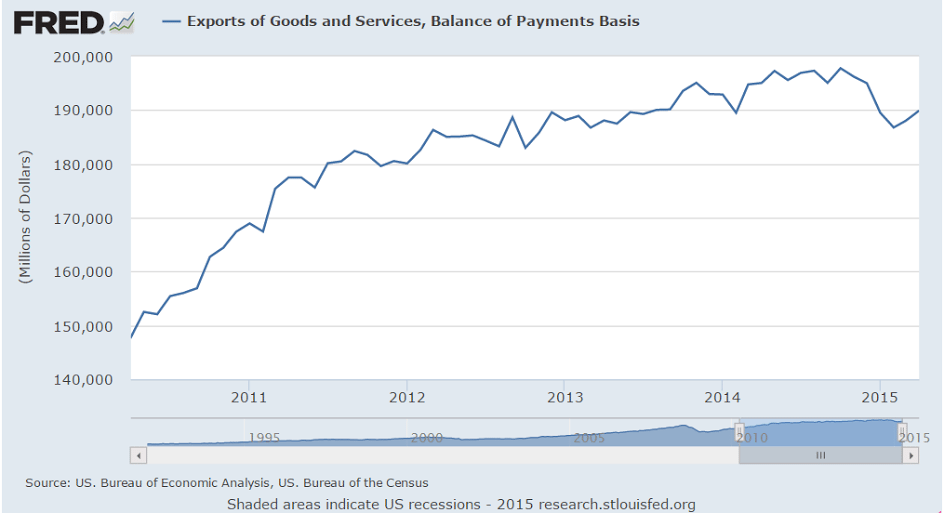
So people transferred their deposits to other banks, and those other banks wouldn’t redeposit/lend those euro back to the Greek banks via the interbank market, at any rate of interest.
So instead the lost deposits were replaced by what functionally are deposits from the ECB via what’s called the ELA. What’s wrong with that? Why have an interbank market at all? Why not simply let banks have debits/deposits from the ECB as needed as long as they are deemed adequately capitalized and in good standing by that same ECB? And no other entity has the access and authority to fully regulate and supervise, qualifying it regarding the decision of providing ‘liquidity’.
The way I say it is ‘the liability side of banking is not the place for market discipline.” Hopefully they know this and don’t decide to punish privately owned ECB member banks for sins of their govt.
On Monday, ECB President Mario Draghi told European lawmakers that, so far, the bank had helped out Greek lenders to the tune of 118 billion euros ($133 billion) – about 66 percent of Greece’s overall economy. At the end of 2014, that sum was only half the current level.
Revolving credit rising when consumer spending is not is a sign of stress:
Consumer Credit
Highlights
Consumer borrowing is showing very solid life, up $20.5 billion in April following an upward revised gain of $21.3 billion in March. The key for this report is a second big gain in revolving credit which is the component where credit cards are tracked. This component rose $8.6 billion following March’s gain of $4.9 billion. These are unusually strong gains for this reading and point squarely at rising consumer confidence. Nonrevolving credit rose $11.9 billion in the month reflecting vehicle financing and another rise in student loans.
Nothing at all exciting happening here:
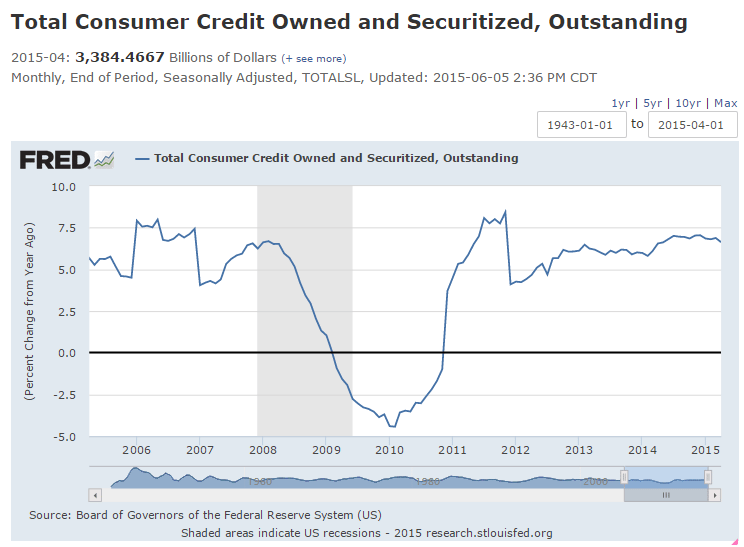
If anything this goes up in front of recessions. It went up into 2014 but rescued by the income from the shale boom that ended in Q4:
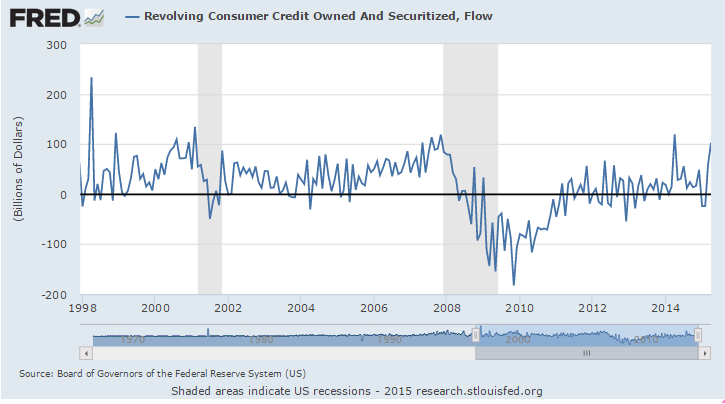
This is mainly student loans and you can see the growth rate is still declining: